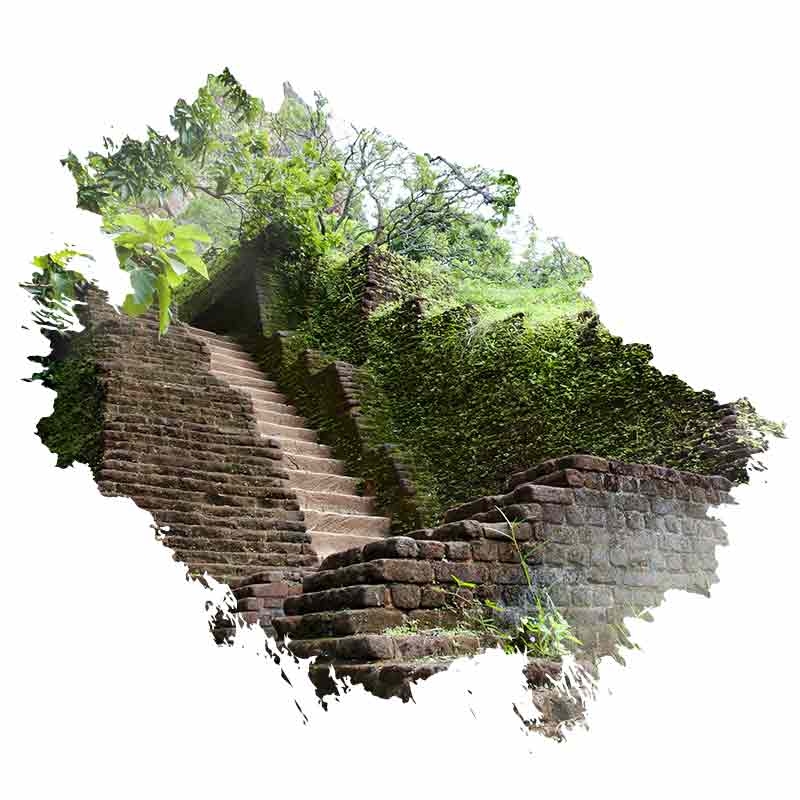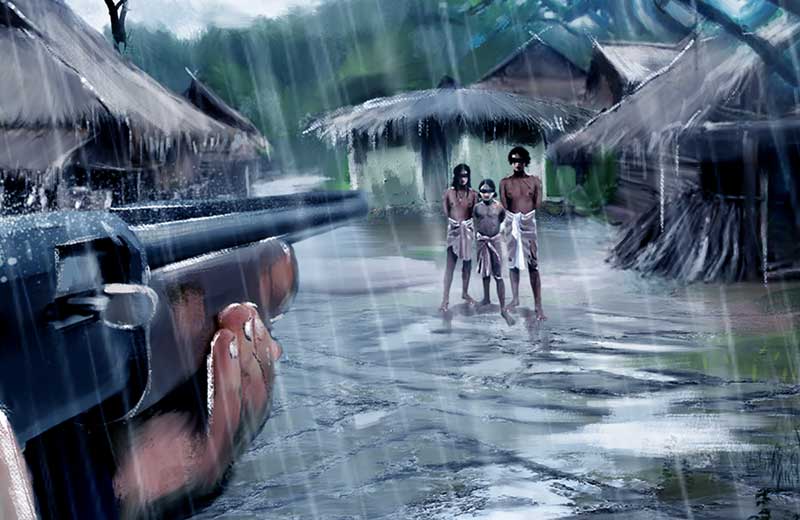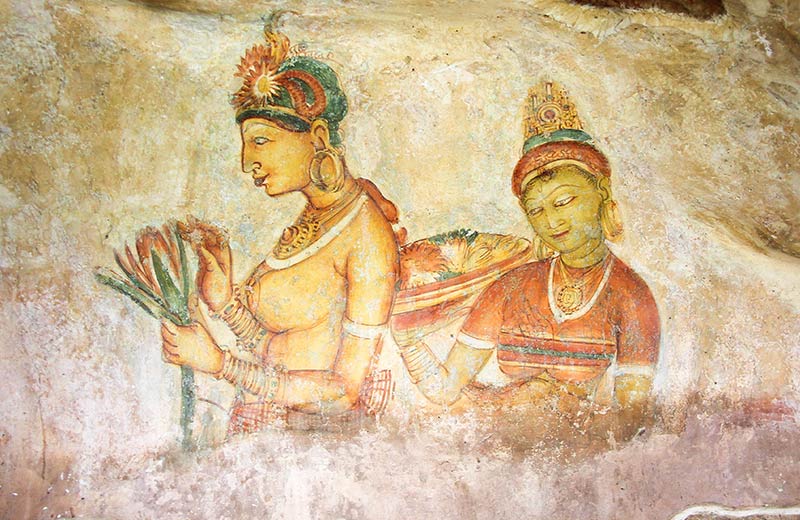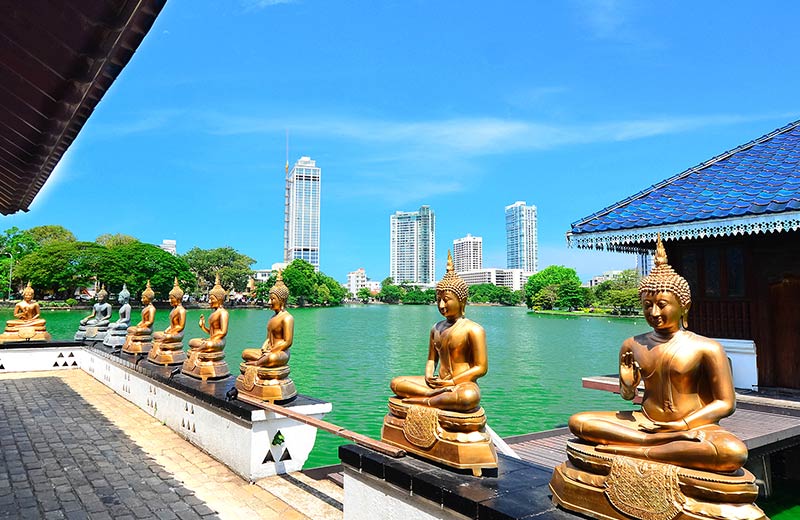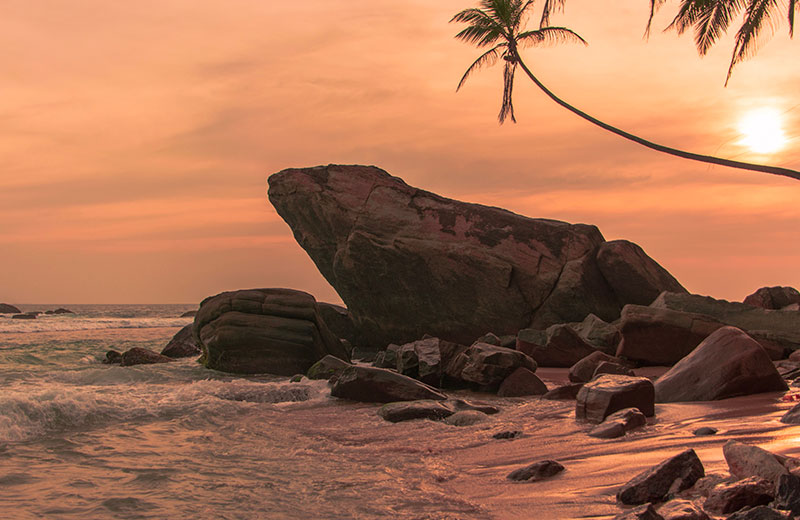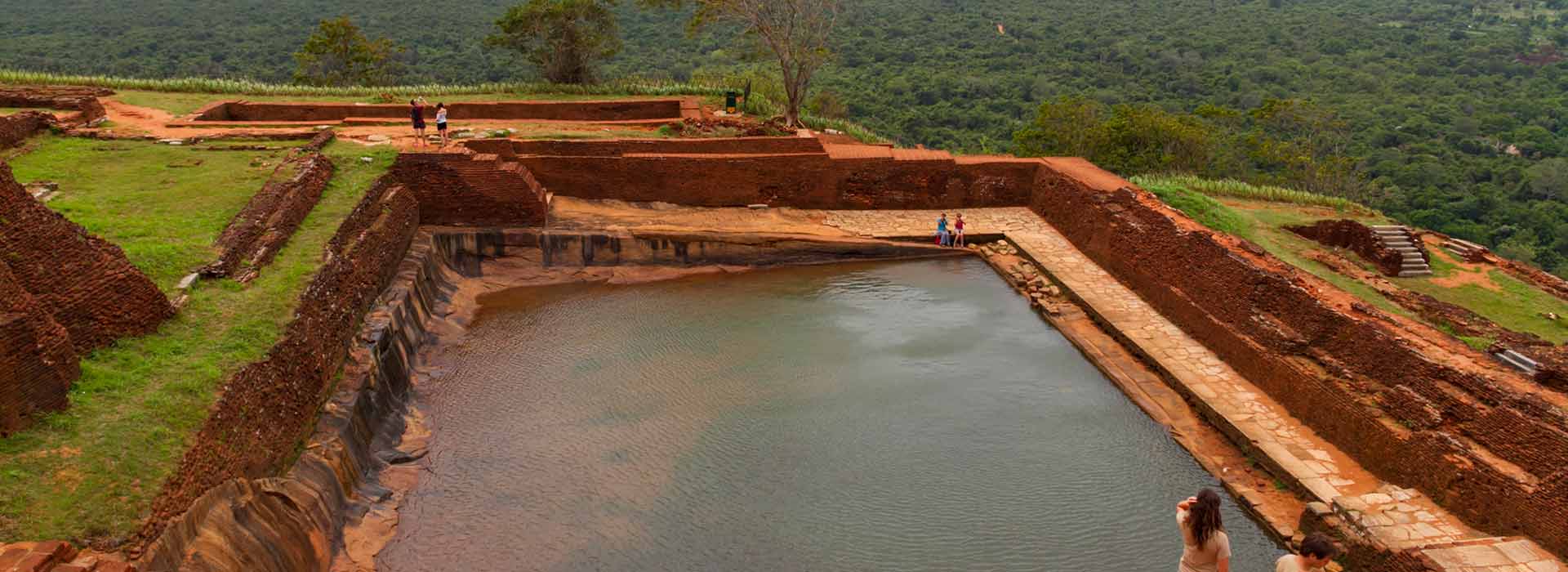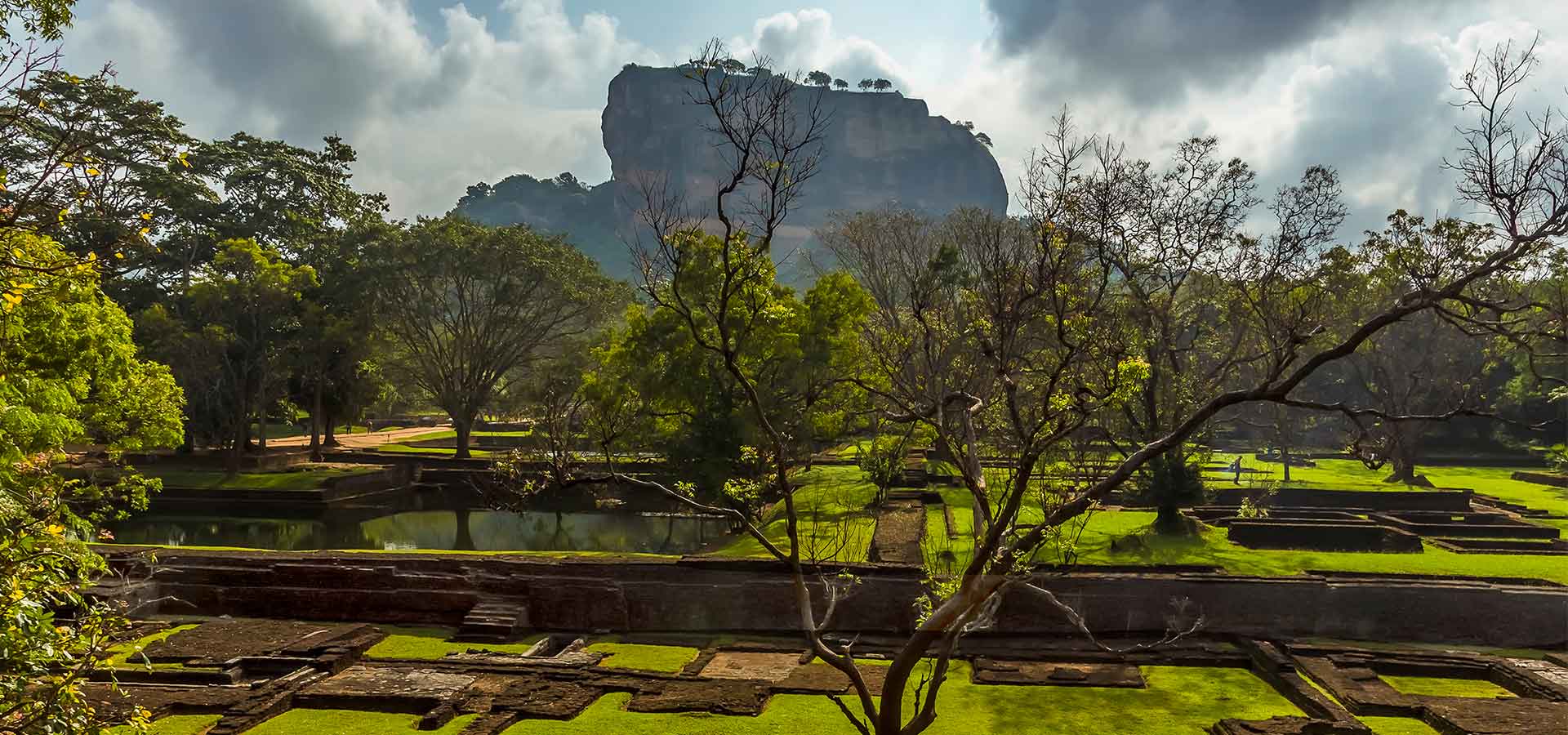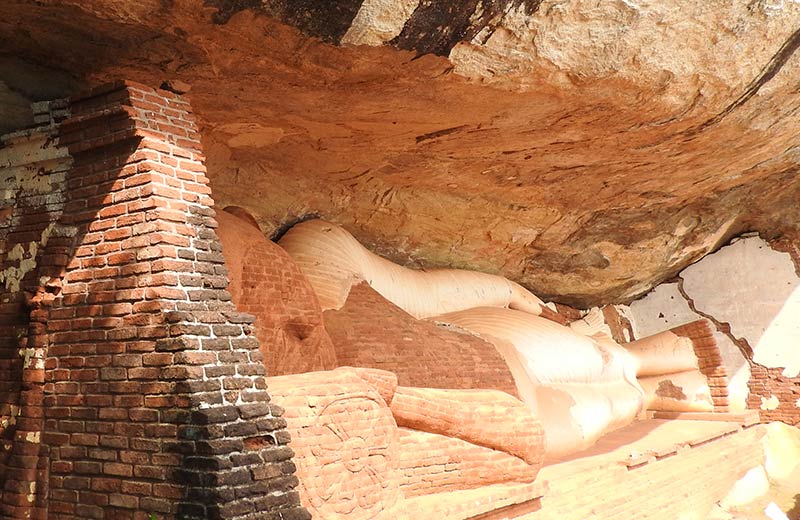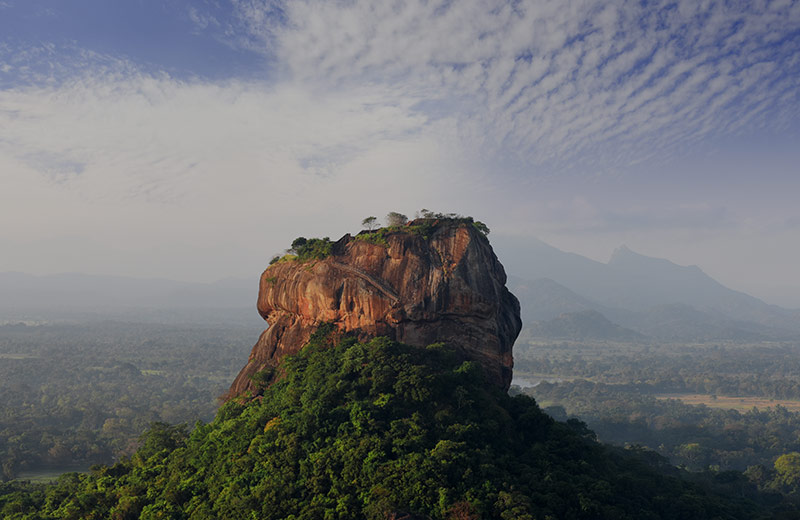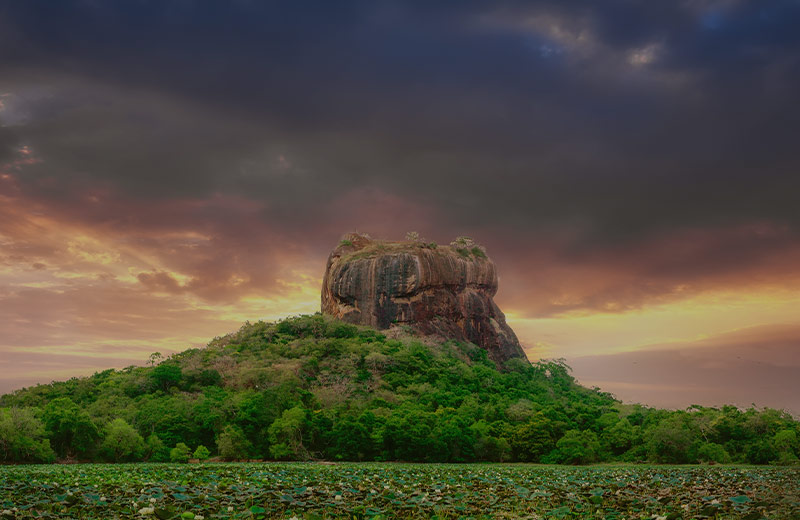The Boulder Gardens
While the Water Gardens are a testament to ancient symmetrical planning, the Boulder Gardens are its opposite, in that they incorporate asymmetrical features. The asymmetry of the design successfully shows the skill and innovation of the ancient craftsmen, who used their natural surroundings as the foundations to create great works of art.
The legendary King Kashyapa built these gardens as a place of solitude, away from his advisors, and away from all the politics. They prove to be the only gardens in the whole of Asia, and possibly the world, to be devoted for rest and relaxation. Taking inspiration from the ancient monastic architecture of the country known as ‘giris’, these naturally formed rocks have distinct grooves that look like steps, drains and intriguing honeycomb-like patterns. These unique patterns were once the foundations of timbered structures and pavilions that housed several of the king’s followers. Aptly named rocks like the ‘Preaching Rock’ and the ‘Cobra Hood Cave’ are a testament to the purpose of the ancient gardens. The ‘Cobra Hood Cave’ in particular is one such unique garden feature that was fashioned by the monks that lived before the king took over Sigiriya.
In addition to being a place of peace and solitude, the Boulder Gardens functioned as an amphitheatre, in support of live theatre, which was flourishing in the Anuradhapura Kingdom at the time. Named the ‘Audience Hall Rock’, it was here that the king and his loyalists would sit down and revel in the plays and dances that were abundant during the period and still form a major part of Sri Lankan culture.
Foundations of water features that run parallel to the Water Gardens can still be found in the Boulder Gardens, and are further accentuated by the great Lion staircase that runs parallel to the rock formations.
The Terrace Gardens
King Kashyapa was a man who was very particular regarding what he wanted people to see when they climbed to the summit of Sigiriya, and this is most apparent in the Terrace Gardens built at the base of the rock. Following the Lion staircase, the visitor’s attention is occupied with exotic plants adorning the walkways, making the climb to the summit one of kaleidoscopic colour.
What makes this feature all the more intriguing is the fact that water control systems on certain terraces were built to nourish the plants constantly with fresh water, similar to the methods used by the ancient Incans of Mesoamerica to cultivate their paddy, except that this was implemented centuries before the Incans implemented their cultivation process. Climbing up through the Lion staircase and reaching the Lions’ paws, you would have an almost eagle eye view of the architectural wonders designed and constructed by the gifted craftsmen of ancient Sri Lanka.
